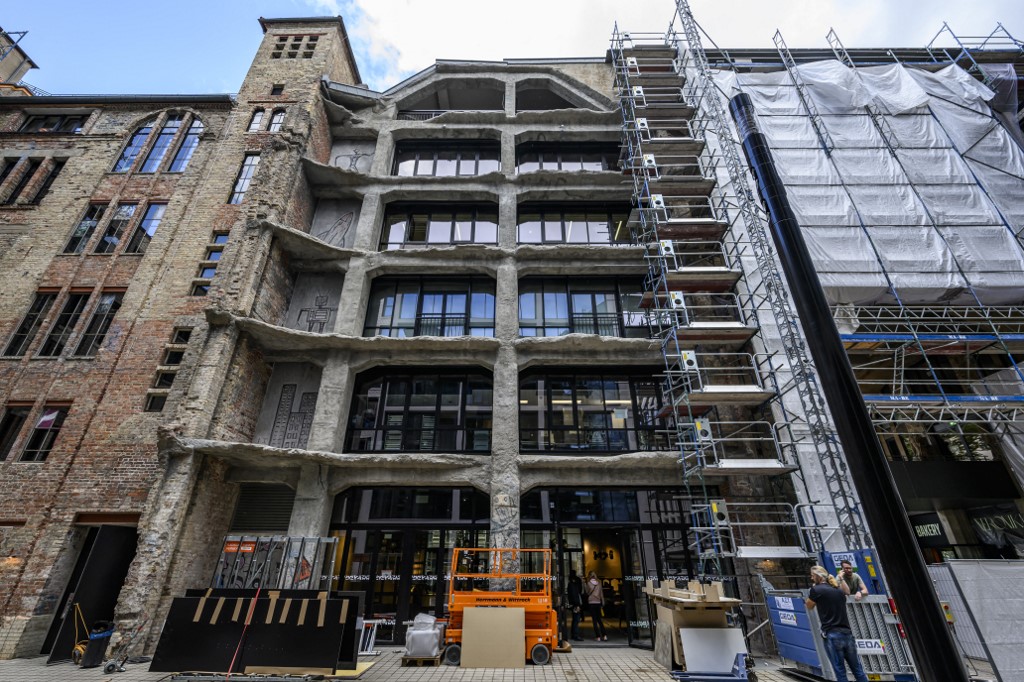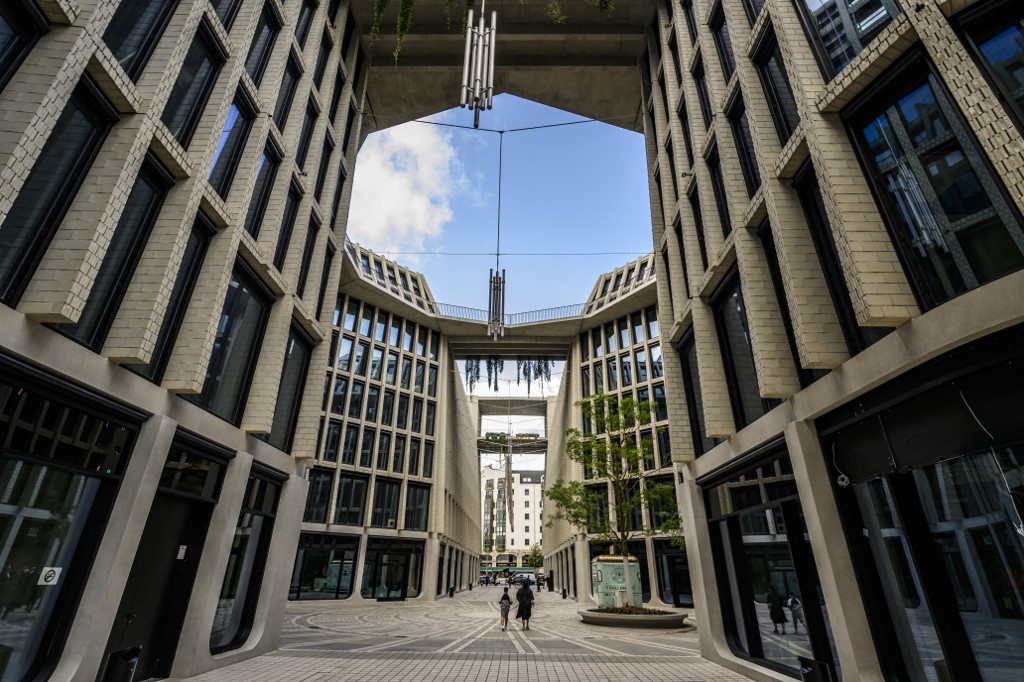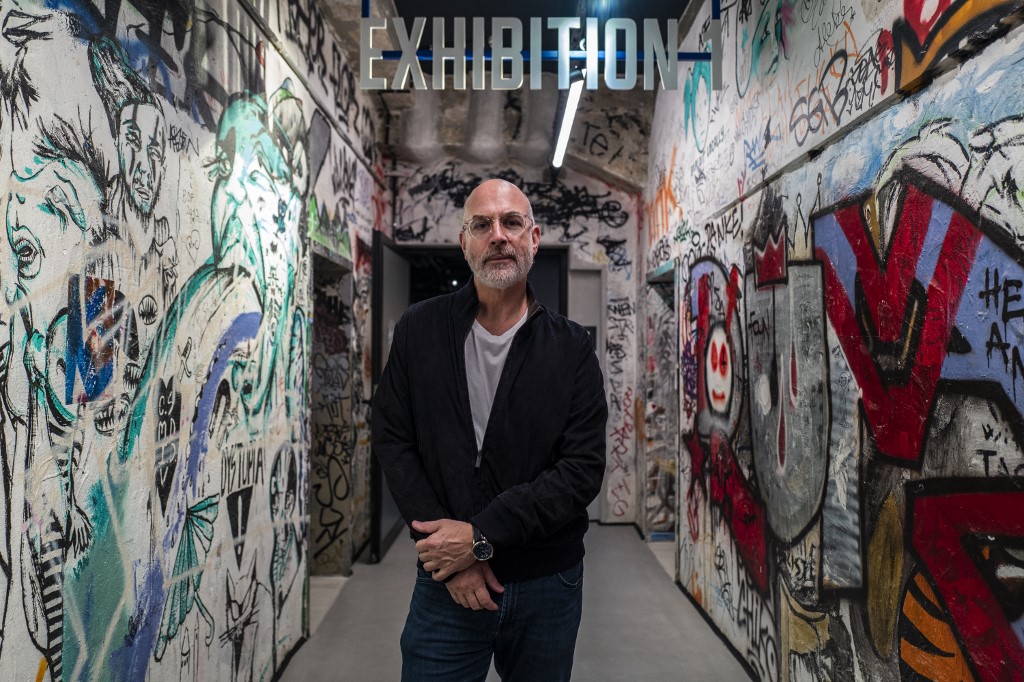
View of the courtyard facade of the new Fotografiska museum, located in the former Tacheles squat in Berlin. /John MacDougall/AFP
View of the courtyard facade of the new Fotografiska museum, located in the former Tacheles squat in Berlin. /John MacDougall/AFP
Berlin's Tacheles art squat, a symbol of the permissive lifestyle of the city after the fall of the Wall, is completing a fiercely disputed transformation into high-end offices, shops and luxury flats.
An outlet of the Fotografiska museum chain is set to open inside the battle-scarred building on September 14 and the first residents of newly-built homes will move in this autumn.
When it is completed, planned for the end of 2024, the complex as will host offices for the likes of Netflix and Pfizer as well as 265 apartments sized from 25 to 360 square meters.
Of the 176 apartments available for purchase – with prices per square meter ranging from $10,300 to $32,600 – around 45 are still for sale, according to developer PWR. The remaining 89 apartments are earmarked for rental.

View of the newly built "Am Tacheles" urban complex which includes the new Fotografiska museum, located in the former Tacheles building. /John MacDougall/AFP
View of the newly built "Am Tacheles" urban complex which includes the new Fotografiska museum, located in the former Tacheles building. /John MacDougall/AFP
Investment fund Perella Weinberg Real Estate bought the property encompassing 25,300 square meters in 2014 for around $150 million – a low price considering the current market.
In addition to the historic building that will house Fotografiska Berlin, the site will include an ultramodern open-air shopping plaza and glass-and-steel office compounds.
Tacheles, which means "straight talk" in Yiddish, was a department store in the early 20th century but was heavily damaged during World War II and was partially demolished while it was still part of East Germany.
Young artists flocked to east Berlin after the fall of the Wall in 1989, drawn by the low cost of living, and squatted disused buildings including the dilapidated five-story complex on Oranienburger Street.
From subculture hub to 'pure profit'
At its peak as a subculture hub, the graffiti-covered Tacheles housed a cinema, restaurant and bar as well as art studios and galleries, bringing in about 400,000 visitors a year. However in 2012, bailiffs and police evicted the artists to make way for construction work, signalling the end of an era.
"Between 2010 and 2012, we were threatened, offered money to leave and had our electricity cut off," Bruno di Martino, a 56-year-old Frenchman who had his studio at the Tacheles since 2006.
After the fall of the Soviet Union, it was no longer clear who owned the buildings, allowing for a creative takeover of the city, but the chaos also attracted developers.
READ MORE
Berliners dance to protest against highway
Berlin's May Day protests keep police on their toes
Berlin's green future on the line in binding referendum
"In East Berlin, many properties were returned to their former owners or their descendants, and this almost always resulted in resale to real estate speculators," said Matthias Bernt, an urban planner at the Leibniz center.
Property prices soared, touching off waves of displacement from the heart of the city that have gathered pace in recent years.
Bruno di Martino was among those impacted. For him, the new Tacheles complex is "a pure profit project aimed at the privileged few".
"Berlin used to attract tourists for its artists, its underground, its alternative side, but all that is in danger of disappearing," he said.

Majority shareholder in Fotografiska Holding AB Yoram Roth poses in hallway of the new Fotografiska museum. /John MacDougall/AFP
Majority shareholder in Fotografiska Holding AB Yoram Roth poses in hallway of the new Fotografiska museum. /John MacDougall/AFP
However, Fotografiska executive chairman and majority shareholder Yoram Roth, born in West Berlin and a descendant of Holocaust survivors, said the city had to change at some point.
"There is this romantic view of what happened here after the Wall fell," he said.
"People want to keep certain things for ever in a certain way. But I think it's also important to remember that whatever happened there was born out of serious tragedy," including two world wars and the Cold War.
Despite that, the Fotografiska museum has decided to keep much of the graffiti bequeathed to Tacheles by its former punk inhabitants, but Roth said Berlin was calling time on the city as a "playground" of vacant lots and squatted property.
"It's normal to expect this space to fill back in with something."
Subscribe to Storyboard: A weekly newsletter bringing you the best of CGTN every Friday
Source(s): AFP